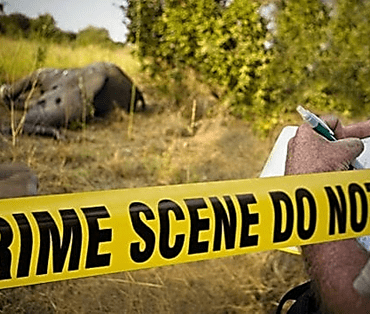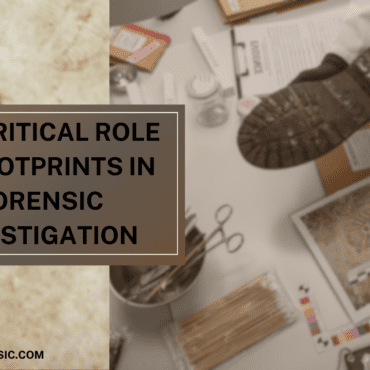Introduction:
In the realm of forensic science, the combination of art and science is very evident in the field of audio-video forensic. This particular branch plays a very crucial role in the investigation of criminal activities where audio and video evidence can be the key to revealing the truth. This blog aims to provide a comprehensive overview of the art and science behind audio-video forensics, including its methodologies, challenges, and the significant impact it has on modern criminal investigations.
Understanding Audio-Video Forensics:
Audio-video forensics involves the scientific analysis and enhancement of audio and video recordings to extract information for legal purposes. It encompasses a wide range of techniques and technologies aimed at clarifying unclear recordings, authenticating digital media, and identifying any alterations or manipulations.
Importance of Audio-Video Forensics in Investigation:
Crime Scene Documentation
Audio and video recordings often serve as essential tools in documenting crime scenes, providing investigators with a visual and auditory record of events.
Identification of Individuals
Facial recognition and voice analysis are essential components of audio-video forensics, which help in the identification of individuals involved in criminal activities.
Legal Admissibility
Audio-visual evidence that is properly analyzed and authenticated can significantly impact legal proceedings by providing a visual or auditory narrative that can strengthen the case for the prosecution or defence.
Reconstruction of Events
Audio-video forensics can help in reconstructing timelines and provide a more accurate representation of incidents in situations when the order of events is uncertain.
Methodologies in Audio-Video Forensics:
Audio Enhancement
One of the primary tasks in audio-video forensics is enhancing the quality of audio recordings. This involves reducing background noise, improving speech intelligibility, and isolating specific sounds or voices.
Voice Identification
Spectrographic analysis and voice comparison techniques are employed by the Forensic experts to identify and verify voices recorded in audio recordings.
Voice Authentication
It is essential to ensure the integrity and authenticity of video or audio recording. Techniques such as digital watermark analysis, metadata examination, and frame-by-frame analysis help determine if a video has been tampered with.
Lip Reading
In situations where audio quality is compromised, lip reading techniques can be used to interpret spoken words.
Facial Recognition
Video footage can be used to identify people with the help of facial recognition technology.
Speaker Profiling
Analyzing speech patterns, accents, and linguistic characteristics helps create profiles of speakers, contributing to the identification process.
Digital Image Analysis
When dealing with digital video, experts examine the compression artefacts, resolution, and other digital signatures to assess the authenticity of the file.
Challenges in Audio-Video Forensics:
While audio-video forensics is a powerful tool, it comes with its set of challenges-:
Quality of Source Material
Poor-quality recordings, with low resolution or heavy background noise, can limit the effectiveness of forensic analysis.
Compression and Encryption
The analysis of video files might be hindered by digital compression and encryption techniques, which call for specific knowledge to overcome these challenges.
Authenticity Concerns
Determining the authenticity of audio or video evidence is crucial. The rise of deepfake technology makes this work even more difficult.
Legal Standard
The admissibility of audio-video evidence in court may be subject to legal standards, and forensic experts must follow these standards to ensure the evidence is admitted.
Real World Applications:
Audio-video forensics finds applications in various real-world scenarios:
Criminal Investigations
In order to gather evidence for criminal investigations, law enforcement agencies use audio-video forensics to examine phone records, surveillance footage, and other types of media.
Corporate Investigations
In cases of corporate fraud or misconduct, audio-video forensics can be used to analyze electronic communications and to locate evidence of wrongdoing.
Legal Disputes
In court, audio-video forensics can be used by lawyers to support their cases and present strong evidence.
Counterterrorism Efforts
Intelligence agencies use advanced audio-video analysis techniques to interpret and understand information gathered during counterterrorism operations.
Technological Advancements:
Advancements in technology continue to shape the landscape of audio-video forensics
Deep Learning and AI
Artificial intelligence and deep learning algorithms have enhanced the ability to automate certain aspects of audio-video analysis, speeding up the process and improving accuracy.
Blockchain for Authentication
The use of blockchain technology helps establish a secure and tamper-proof chain of custody for digital evidence, ensuring its authenticity.
Real-time Analysis
Technological innovations enable forensic experts to conduct real-time analysis of audio and video streams, giving them valuable information during critical situations.
Advancements in Facial Recognition
Facial recognition algorithms have become more sophisticated, making it possible to identify people in video footage with greater accuracy.
Ethical Considerations:
Like any other field of forensics, audio-video forensics possesses ethical challenges.
Privacy Concerns
There are privacy problems associated with the use of facial recognition and other identification technology, so there needs to be a careful balance maintained between the needs of law enforcement and the rights of individuals.
Potential for Misuse
The ability to manipulate audio and video content, coupled with deepfake technology, raises concerns about the potential for malicious use in misinformation or character assassination.
Informed Consent
In some cases, individuals may be unaware that they are being recorded. The ethical implications of using such recordings as evidence need careful consideration.
Conclusion:
In conclusion, audio-video forensics stands at the intersection of art and science, providing invaluable tools for investigators and legal professionals. As technology continues to advance, so too will the capabilities of audio-video analysis in uncovering the truth in criminal investigations. Ethical considerations must guide the use of these powerful tools to ensure that justice is served while respecting individual rights and privacy. As we navigate an increasingly digital world, the role of audio-video forensics in maintaining the integrity of evidence and uncovering the hidden details of audio and video recordings will only become more critical.




Post comments (0)